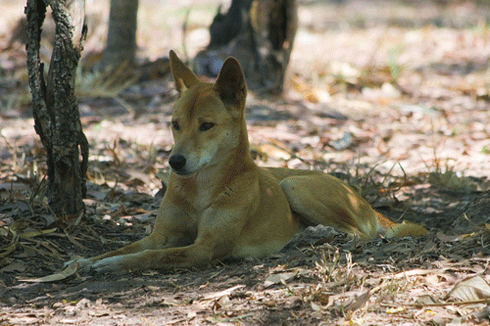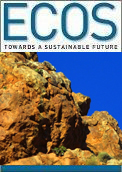
|
Published: 20 February 2012
Does an introduced species belong yet? Ask the locals, say scientists
A radically new way to determine whether an introduced species has become a native species – by observing the reactions of other local native species – is outlined in new research published in the journal Public Library of Science One (PloS One).

|
|
The dingo (Canis lupus dingo) was used as a case study, as its native status in Australia remains disputed. Credit:
Peter Nijenhuis
|
Researchers Alex Carthey, a PhD student in the School of Biological Sciences at the University of Sydney, and her supervisor Associate Professor Peter Banks, explain that introduced species do not remain eternally ‘new’ in an ecosystem: at some point they become ‘locals’ themselves.
‘Determining whether species are native or not is a worldwide conundrum. Scientists, governments and legislators have struggled with the question of how long it is before you can consider a “new” species to be native,’ says Assoc. Prof. Banks.
‘Native status is a big deal. It affects people’s reaction to the species and where conservation dollars are spent.’
It has been thought impossible to answer this question, but the researchers propose a solution –‘ask’ the local wildlife it interacts with.
‘If local fauna recognise and respond effectively to the new species, it has become very well integrated into that community,’ says Assoc. Prof. Banks.
To investigate this process, the team used the dingo (Canis lupus dingo) as a case study, as its native status in Australia remains disputed.
Dingoes were introduced to Australia around 4000 years ago, but there is debate about whether they should be classified as a native species or not. The native status of dingoes has implications for how they are managed and conserved.
‘We wanted to see how a vulnerable native species, the bandicoot (Perameles nasuta) reacts to domestic dogs (Canis lupus familiaris), which are the same species as the dingo. So domestic dogs are in that sense standing in as a proxy for the dingo in this study’, says Ms Carthey.
‘We compared how bandicoots forage in urban backyards in households that have dogs, compared to those that have cats, which were more recently introduced.
‘We found that bandicoots recognise the danger and avoid foraging in backyards with dogs, but continue to visit yards of cat owners and petless households.
‘Our study suggests that bandicoots have come to fear dogs as predators after thousands of years of interaction with dingoes, and so avoid areas with dogs, while they are yet to recognise the threat cats pose as predators, as bandicoots haven’t been in contact with cats for as long.’
Cats were introduced in Australia only about 150 years ago.
If bandicoots are responding to the danger that dogs pose as predators, it suggests that at least this local species reacts to dogs as they would to a native predator.
According to Ms Carthey, ‘this supports the argument for dingoes to be considered a native species. The lack of response to cats by bandicoots in our study suggests that hundreds of years of coexistence has not been enough time for bandicoots to start regarding cats as anything other than an introduced species and not yet native’.
Unlike newly arrived species, native species are well-integrated and do not upset the balance in an ecosystem. In contrast more recent arrivals have enormous ecological impacts, including on native species that do not yet know how to respond to them. This study suggests, however, that with enough time many introduced species will eventually integrate into their new community until at some point they will be considered native.
Source: University of Sydney



